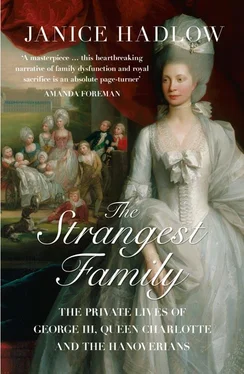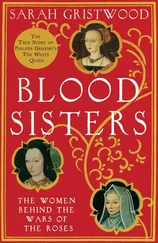As he went on to remind his readers, squalor and poverty were of course still to be found in eighteenth-century England, but most foreign observers agreed that a larger proportion of the British now seemed to have escaped the worst deprivations that were the general experience of the European poor. Back in the 1720s, de Saussure had observed with surprise that ‘the lower classes are usually well dressed, wearing good cloth and linen. You never see wooden shoes in England, and the poorest individuals never go with naked feet.’ 17Indeed, in England, the wearing of ‘wooden shoes’ was indelibly associated with the desperate poverty held to be the inevitable product of life under Catholic absolute monarchies. The passionate cry of: ‘No popery and no wooden shoes!’, which so often resounded through the streets of eighteenth-century London, was an expression of the conviction held by even the poorest Britons that they enjoyed a standard of living of which their foreign counterparts could only dream.
The small prosperity of small people created the demand for ever larger numbers of affordable goods. British manufacturers soon showed themselves eager and adaptable enough to supply them. Unlike many of its grander European competitors, the British market did not just cater to the super-rich – to ‘the magnificence of princes’. It was just as interested in selling to new customers, less wealthy but more numerous. Matthew Boulton, the great Birmingham-based producer of the buckles and buttons that were an essential part of every eighteenth-century wardrobe, had no doubt which of the two kinds of buyer he valued most. ‘We think it of far more consequence to supply the People than the Nobility only … We think that they will do more towards supporting a great Manufactory than all the Lords of The Nation.’ 18Boulton understood that an entire new market had emerged, a new generation of purchasers, looking to achieve their own moderately priced vision of the good life, and he and others were ready and willing to supply it. ‘Thus it is,’ wrote the clergyman and economist Josiah Tucker, ‘that the English … have better conveniences in their houses and affect to have far more in quantity of clean, neat furniture and a greater variety, such as carpets, screens, window curtains, chamber bells, polished brass locks, fenders etc., (things hardly known abroad amongst persons of such rank) than are to be found in any country in Europe.’ 19These simple and often extraordinarily resilient objects, designed to appeal to the taste of modest eighteenth-century buyers, were made in such numbers that any frequenter of modern auction rooms or antique shops will be familiar with them. Those that have survived the uses and abuses of 250 years are often beautiful to look at and still desirable things to own. They are also mute witness to the power of a quiet revolution which began to transform British experience just as George III began his reign. He was the first king to rule over a nation of consumers.
The Britain in which the young king acceded in 1760 was an assertive and forceful society, sometimes brash and overbearing in the robustness of its self-belief. It was not an easy place in which to be poor, vulnerable, sensitive or a failure; but for those who could stand the pace, and who were not among the losers crushed by the relentlessness of its forward movement, the experience of being British in the mid-eighteenth century was dominated by a sense of energetic exhilaration, an acute consciousness of an upward trajectory towards levels of international power and domestic wealth that were unthinkable only a generation before. The experience of the nation thus mirrored that of its inhabitants; both now found themselves in possession of assets that had arrived with swift and surprising speed. Horace Walpole caught the mood perfectly. ‘You would not know your country again,’ he wrote to a friend who had long lived abroad. ‘You left it as a private island living upon its means. You would find it now capital of the world.’ 20
*
In such circumstances, the accession of a youthful king, whose vitality seemed to reflect the ambition of the country he ruled, was greeted with unconstrained enthusiasm. George II had been on the throne since 1727. He was an old man, aged seventy-six at the time of his death, who belonged to the old world. Of the new monarch, Philip, 4th Earl of Chesterfield, usually the most detached and cynical of observers, wrote that he was the king of ‘his united and unanimous people, and enjoys their confidence and love to such a degree that were I not as fully convinced as I am of His Majesty’s heart and the moderation of his will, I should tremble for the liberties of my country’. 21
Impressions of the young man at the centre of this whirlwind of attention were universally positive, contrasting his affability with the curmudgeonly attitudes of his elderly predecessor. Walpole, who rushed to court to get an early look at his new ruler, was pleased with what he found: ‘This sovereign don’t stand in one spot, with his eyes fixed royally on the ground and dropping bits of German news; he walks about and speaks to everybody.’ 22
The polite and considerate monarch had not yet grown into the bulky figure he would become in early middle age, the familiar image of florid imperturbability whose prominent blue eyes gaze so resolutely from later portraits. Although he was not conventionally handsome, the Duchess of Northumberland, who knew him well, described him tactfully as ‘tall and robust, more graceful than genteel’. The family tendency towards fat, against which George struggled diligently throughout his life, meant that he would never look the part of either romantic hero or fashion plate. He had strong, white teeth, evidently enough of a rarity, even in aristocratic circles, to merit approving comment by a number of observers. His hair, when neither powdered nor hidden beneath a wig, was considered one of his best points. It was, the duchess recorded, ‘a light auburn, which grew very handsomely to his face’. She also admired his clear and healthy complexion, but noted that in common with others of his age, ‘he had now and then a few pimples out’. For the duchess, however, it was George’s demeanour that mattered more. ‘There was a noble openness in his countenance, blended with a cheerful good-natured affability,’ which trumped his prosaic appearance and even gave him a certain fugitive charm. 23The portrait that best captures the elusive quality of George’s appeal was made a few years before his accession by the Swiss painter Jean-Etienne Liotard. Delicately rendered in pastels, it does not flatter – the man George would later become is visible in the round lineaments of his face, the fullness of his mouth and the protuberance of his eyes – but it captures brilliantly the clear-eyed, healthy, pink-and-white freshness of his youthful self.
George’s looks were only part of the story. In the opening weeks of his reign, admiration for the new king’s ‘open and honest countenance’ was exceeded only by approval of the unstudied excellence of his behaviour. Everyone who saw him in the immediate aftermath of his grandfather’s death commented on the considerate correctness of all his actions. ‘He has behaved with the greatest propriety, dignity and decency,’ observed Walpole. 24He knew how to carry himself respectfully at solemn moments, but onlookers were also struck by his ability to strike a lighter note. His unforced, natural warmth of character was particularly admired. Lady Susan Fox-Strangways, who saw him often at court, approvingly observed in him ‘a look of happiness and good humour that pleases everyone – and me in particular’. 25
The grace and cheerfulness that George displayed in these days of excitement and promise were more than the temporary product of a moment; he was an essentially good-hearted man, who tried to observe the decencies of gentlemanly behaviour even in the darkest and most trying times of his reign. However, the polite, easy candour celebrated by so many observers in those early days was only part of who he really was. There was a sombre, more thoughtful cast to his character, which Liotard’s portrait caught as acutely as it did the new-minted freshness of his features. The young George stares watchfully out from the canvas, with an air of wary self-containment. This is a serious man, with a serious purpose in mind – there is no hint of frivolity or light-heartedness in his measured expression. For all its tenderness, it is also an image of quiet, sustained – even steely – determination; and it was a better indicator of what lay in George’s mind as he contemplated the future than all the benign gestures with which he navigated the immediate aftermath of his grandfather’s death. For George III came to the throne determined to do more than merely replace George II. He aspired to be not just the next king, but a new kind of king.
Читать дальше












